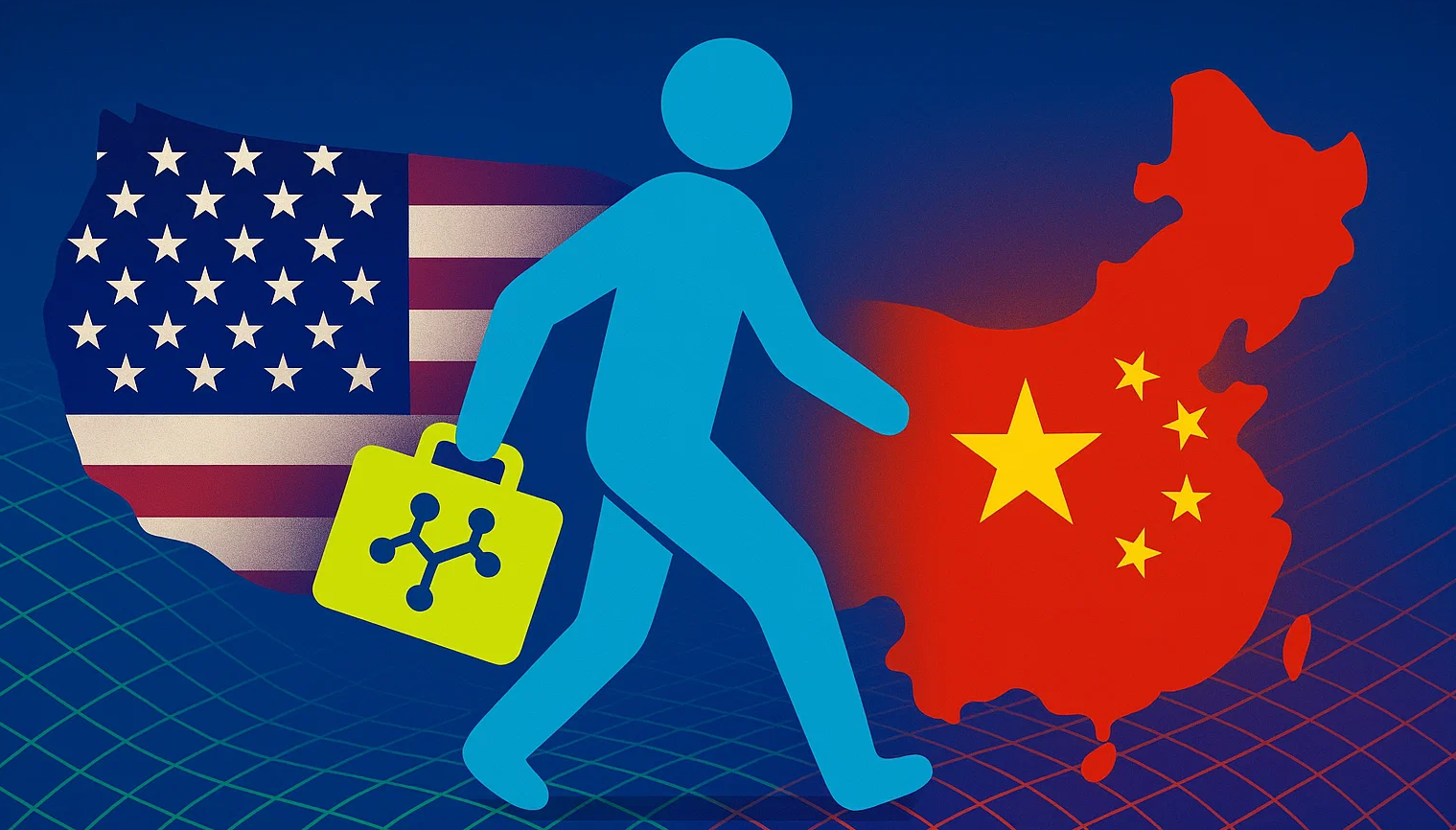A new report highlights how Chinese AI startup DeepSeek is outperforming Western benchmarks with a research team that is almost entirely China-based—and what that means for the US’s position in global AI development.
According to a study from the Hoover Institution and the Stanford Institute for Human-Centered AI, DeepSeek AI signals that the US is starting to lose its edge in cultivating top AI talent. Since its founding in 2023, DeepSeek has published five major research papers, all released in 2024 and 2025. These papers—most notably the DeepSeek-R1 model—have attracted significant attention. The report points out that nearly all of this work was produced by researchers educated in China.
Of the 211 DeepSeek authors analyzed, 197 were currently or previously affiliated with Chinese institutions, and more than half had never left China for school or work. Only 24 percent had any experience in the US, most of it brief, and many later returned to China. The report describes this as a "strategic knowledge transfer" and a "reverse brain drain" that is giving China’s AI ecosystem a major boost.
DeepSeek’s stable, high-performing talent base
The study makes it clear that DeepSeek isn’t staffed by inexperienced newcomers. Among the 31 "key team" members who contributed to all five papers, Hoover’s analysis found strong academic credentials: an average of 1,554 citations, an h-index of 13.5, and an i10-index of 25.5. For comparison, the median for OpenAI’s team was 338 citations, an h-index of 6, and an i10-index of 4.
These citation-based metrics are standard for measuring scientific impact. The h-index shows how many of a researcher’s papers have been cited at least that many times—so an h-index of 10 means ten papers have each been cited at least ten times. The i10-index counts the number of papers with at least ten citations, showing consistency in research output.
Overall, the analysis suggests that DeepSeek’s team has a consistently high level of research output, while at OpenAI, a few standout authors drive most of the citation numbers.
There’s also a clear organizational focus: nearly all of DeepSeek’s "Key Team" members are in "Research & Engineering." In later papers, DeepSeek introduced a formal internal hierarchy with "Core Contributors," pointing to growing specialization within the company.
A research network anchored in China
The report tracks researchers’ careers back to 1989, finding that Chinese institutions dominate as both training grounds and long-term employers. The Chinese Academy of Sciences (CAS) sits at the center, with 53 researchers connected directly or through its institutes. Peking University, Tsinghua, and Sun Yat-sen University follow.
Only four people in the dataset had no verified ties to China. Most international experience—especially in the US—was temporary. As of the analysis, just 15 of the 201 researchers were working at US institutions.
The US as a stepping stone
The 49 DeepSeek researchers with US experience have strong academic records: an average of 2,200 citations, an h-index of 17, and an i10-index of 34. But only seven remain in the US long-term. Around 40 percent followed the familiar path of "China → USA → China," while others moved between countries multiple times. Some also built careers in Europe, Singapore, or Australia. According to insiders, a few prominent DeepSeek employees have reportedly had to surrender their passports and are now unable to travel abroad freely.
The report says these mobility patterns show that while the US remains an important stop for research, it is no longer the final destination. Instead, the US system increasingly serves as a training ground, with the benefits ultimately feeding back into China’s innovation ecosystem.
The authors warn that the US is losing its status as a global magnet for top talent. The idea that the best minds will automatically want to stay in the US is outdated. To remain competitive, the US needs to step up its efforts to attract talent, develop targeted immigration strategies, and invest in STEM education at home.







